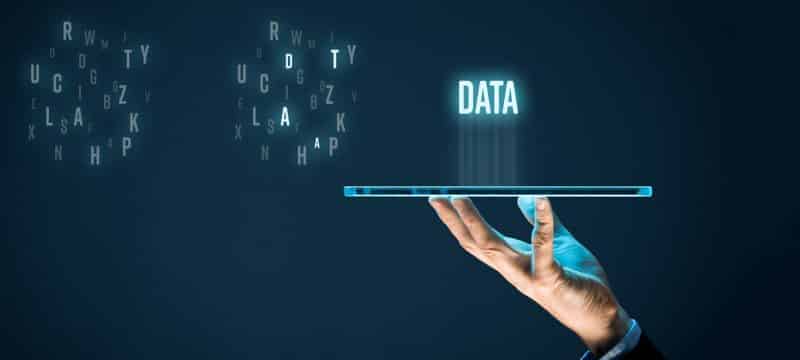Businesses now have more data at their disposal than they’ve ever had before. However, because of the sheer volume of data, making sense of the massive volumes of structured and unstructured data to implement reforms can be incredibly difficult. This difficulty, if not effectively addressed, has the potential to reduce the value or validity of all the data. Data mining is the process through which businesses look for patterns in data to gain insights that are relevant to their needs. In other words, both business intelligence and data science, without doubt, require it. Basically, organizations can employ a variety of data mining techniques to turn raw data into useful insights. These range from cutting-edge artificial intelligence to the fundamentals of data preparation, all of which are critical for getting the most out of data investments.
So in this post, we’ll be taking a deep dive into all you should know about the techniques and processes of data mining. But just to be sure you know what you are getting into, check out our post on data mining definition, importance, application, and best practices to get acquainted with the basics.
Now let’s set the ball rolling…
Techniques & Steps for Data Mining
Below is a comprehensive list of data mining techniques or steps every business would need at one point or the other during the data mining process.
#1. Data Cleaning and Preparation
Cleaning and preparing data is an important step in the data mining process. To be helpful in various analytic procedures, raw data must be cleansed and structured. Different parts of data modeling, transformation, data migration, ETL, ELT, data integration, and aggregation are often aspects in data cleaning and preparation. Generally, it’s a critical step in determining the optimal use of data. This also means understanding its basic features and attributes.
The significance of data cleaning and preparation for a business is self-evident. Data is either meaningless to an organization or untrustworthy owing to its quality if this first stage is skipped. Businesses should be able to trust their data, analytics results, and the actions taken as a result of those results.
#2. Tracking Patterns
Pattern recognition is a basic data mining technique. It entails detecting and tracking trends or patterns in data in order to draw educated conclusions regarding business outcomes.
When a company notices a pattern in sales data, for example, there’s a foundation for taking action. It has to capitalize on the information. Also if a company discovers that a given product sells better than others for a specific demographic, it can utilize this information to develop similar products or services, or just better stock the original product for this group.
#3. Classification
The numerous qualities linked with different types of data are often analyzed using several classification data mining techniques.
Organizations can categorize or classify linked data after identifying the major characteristics of various data kinds. This is essential for recognizing personally identifiable information that businesses may want to protect or redact from documents, for example.
#4. Association
The term “association” refers to a data mining technique that has a lot in common with statistics. It shows that certain data (or data-driven events) are connected to other data or data-driven events. In other words, it’s comparable to the machine learning concept of co-occurrence, in which the existence of one data-driven event indicates the possibility of another.
Furthermore, correlation is a statistical term that is analogous to the concept of association. This indicates that data analysis reveals a link between two data occurrences, such as the fact that purchasing hamburgers are commonly accompanied by purchasing French fries.
#5. Outlier Detection
Any irregularities in datasets are detected via outlier detection. When companies discover anomalies in their data, it becomes easier to understand why they occur and plan for future occurrences in order to meet corporate goals. For example, if there is a rise in the use of transactional systems for credit cards at a given time of day, businesses can use this information to optimize their sales for the remainder of the day by working out why.
Read Also: Risk Management Strategies: 5+ Strategies You Can Follow Now!!!
#6. Clustering
Clustering is an analytics strategy that uses visual methods to comprehend data. Graphics are used by clustering methods to demonstrate where the distribution of data is in relation to certain metrics. However, to depict these data distribution, clustering techniques often use different colors.
Meanwhile, cluster analytics works best with graph techniques. Users may visually observe how data distribution works and detect trends that are relevant to their business objectives using graphs and clustering in particular.
#7. Regression
Regression techniques are helpful in determining the nature of a dataset’s relationship between variables. In some cases, the associations could be causal, while in others, they could just be correlations. Regression is a simple white box technique for determining how variables are related. And when it comes to the application of regression techniques, forecasting and data modeling top the list.
Read Also: FORECASTING MODELS: Types and Detailed Guide to the Models
#8. Prediction
Prediction is one of four disciplines of analytics and is a particularly strong aspect of data mining. Predictive analytics works by extending trends observed in current or historical data into the future. As a result, it provides businesses with insight into what trends will emerge in their data in the future.
Using predictive analytics can be done in a variety of ways. Aspects of machine learning and artificial intelligence are integral parts of some of the more advanced ones. Predictive analytics, on the other hand, hardly ever have to rely on these techniques; it works with simpler algorithms.
#9. Sequential patterns
This data mining technique focuses on uncovering a set of events that occur in a predetermined order. It’s very helpful for mining transactional data. This method, for example, can disclose the segments of apparel buyers are more likely to acquire after making a first purchase, such as a pair of shoes.
Understanding sequential patterns can assist businesses in recommending additional products to clients in order to increase sales.
#10. Decision Trees
Decision trees are a form of prediction model that allows businesses to harvest data effectively. Although a decision tree is technically a type of machine learning, it is more commonly referred to as a white box version due to its simplicity.
Users can readily see how the data inputs affect the outputs using a decision tree. For instance, a random forest is a predictive analytics model that is created by combining multiple decision tree models. Complicated random forest models are referred regarded as “black box” machine learning techniques. This is because their outputs are not always straightforward to interpret based on their inputs. However, in most circumstances, this fundamental kind of ensemble modeling is more accurate than relying just on decision trees.
#11. Statistical Techniques
Statistical techniques are at the heart of the majority of data mining analytics. The various analytics models are based on statistical ideas that produce numerical numbers that could help in achieving certain business goals.
In image recognition systems, neural networks, for example, use sophisticated statistics based on different weights and metrics to identify whether a picture is a dog or a cat.
Furthermore, statistical models are one of the two primary fields in artificial intelligence.
Some statistical techniques have static models, while others that use machine learning improve over time.
#12. Visualization
Another important aspect of data mining is data visualization. They provide users with access to data based on sensory experiences that may be seen.
Today’s data visualizations are dynamic, useful for streaming data in real-time, and distinguished by a variety of colors that reveal various data trends and patterns.
Also, dashboards are a powerful tool for uncovering data mining insights using data visualizations. So, instead of relying solely on the numerical outputs of statistical models, organizations can create dashboards based on a variety of metrics and use visualizations to visually highlight patterns in data.
#13. Neural Networks
A neural network is a type of machine learning model that frequently comes up in artificial intelligence and deep learning. Neural networks are one of the more accurate machine learning models used today. Their names are a result of the fact that they have different layers that mirror the way neurons work in the human brain.
Although a neural network can be a useful tool in data mining, organizations should exercise caution when employing it. This is because some of these neural network models are quite complex, making it difficult to grasp how a neural network arrived at a result in the first place.
#14. Data Warehousing
The data warehousing stage of the data mining process is crucial. Data warehousing entails storing structured data in relational database management systems so that it could undergo analysis for business intelligence, reporting, and basic dashboarding.
In recent times, cloud data warehouses and data warehouses in semi-structured and unstructured data repositories, such as Hadoop, are readily available.
While data warehouses were once used to store and analyze historical data, many modern approaches can now provide in-depth, real-time data analysis.
#15. Long-term Memory Processing
The ability to interpret data over long periods of time is referred to as long-term memory processing. This is where data warehouses’ historical data comes in handy.
Basically, when a company can run analytics over a long period of time, it can spot patterns that might otherwise be difficult to notice. For example, a business may discover subtle indications to lowering churn in finance by analyzing attrition over a period of several years.
#16. Artificial Intelligence and Machine Learning
Machine learning and artificial intelligence (AI) are two of the most cutting-edge data mining technologies. When working with large amounts of data, advanced forms of machine learning, such as deep learning, provide highly accurate predictions. As a result, they’re valuable in AI applications such as computer vision, speech recognition, and advanced text analytics applying Natural Language Processing.
These data mining approaches work well with semi-structured and unstructured data to extract value.
The Future of Cloud and Data Mining
The expansion of data mining has been accelerated by cloud computing technology. Cloud technologies are perfectly adapted for today’s high-speed, massive amounts of semi-structured and unstructured data that most businesses must deal with. The elastic resources of the cloud can quickly scale to satisfy these huge data demands. As a result, because the cloud can keep more data in a variety of forms, more data mining technologies are required to turn that data into insight. Advanced data mining techniques such as AI and machine learning are also available as cloud services.
But then future advancements in cloud computing will undoubtedly increase the demand for more powerful data mining tools. AI and machine learning will become much more widespread in the next five years than they are now.
Data Mining: Kicking Off
Data mining can be initiated by gaining access to the relevant technologies. And because data mining begins immediately after data ingestion, finding data preparation solutions that support the various data structures required for data mining analytics is crucial. Companies will also want to classify data in order to use the aforementioned strategies to investigate it. Modern data warehousing, as well as numerous predictive and machine learning/AI algorithms, are helpful in this area.
Using a single tool, however, for all of these distinct data mining processes can assist organizations. Companies can enhance the data quality and data governance controls required for trusted data by having a single location to undertake these various data mining processes.
What Are the Five 5 Data Mining Techniques?
The major data mining techniques include the following;
- Classification Analysis.
- Association Rule Learning
- Anomaly or Outlier Detection
- Clustering Analysis
- Regression Analysis
What Are the Four Data Mining Techniques
There are actually more than four techniques in the world of data mining, but a few of them include;
- Regression (predictive)
- Association Rule Discovery (descriptive)
- Classification (predictive)
- Clustering (descriptive
What Are the 3 Types of Data Mining?
Types of data mining are:
- Clustering
- Prediction
- Classification
What Is the Best Data Mining Techniques?
In Artificial Intelligence-based machine learning models, neural networks are also one of the most used data mining techniques (AI). Similar to neurons in the brain, it strives to detect data relationships. Many layers of a neural network collaborate to provide highly accurate findings from data analytics.






